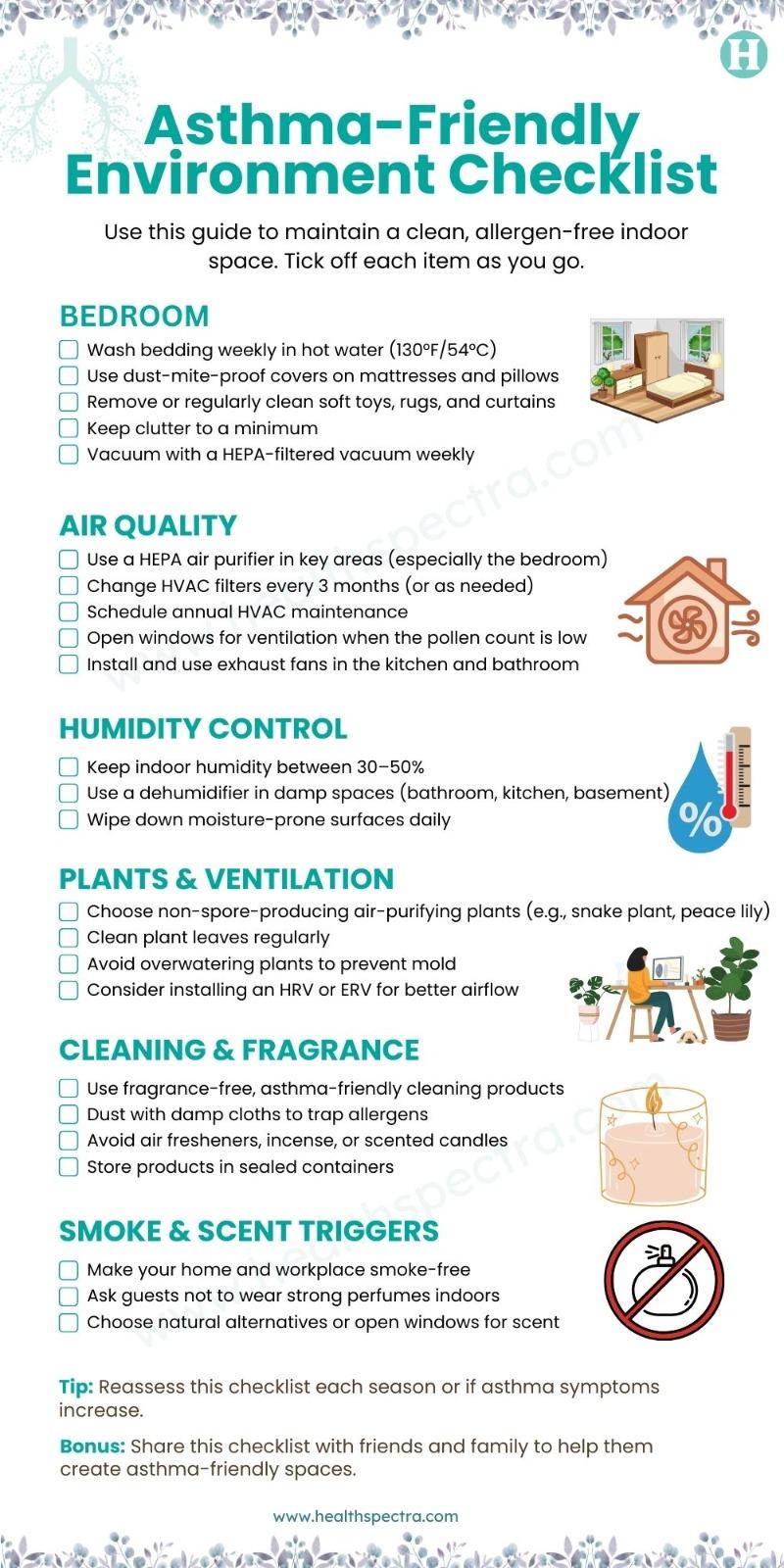Did you know that the air within your home or workplace can be as dangerous as outdoor air pollution, particularly for those with asthma? Your home and workplace environment are essential factors in controlling asthma.
Typical indoor allergens such as dust mites, pet dander, mold, smoke, and even odors can aggravate asthma symptoms. Indoor air pollution makes breathing more difficult for individuals with asthma, influencing sleep, energy levels, and health.
Enhancing your indoor air quality can make a significant impact. With the proper steps, you’ll be able to breathe with ease, experience fewer asthma attacks, and feel better day after day.
This article provides easy, effective solutions to minimize asthma triggers at home and in the workplace. Curious about how small changes can bring a big change? We’ve got you covered with real solutions that work. Scroll below for a downloadable checklist.
Hang in there to learn 10 simple ways to transform your space into a secure, asthma-friendly environment.
READ MORE: Common Triggers that Could Worsen Asthma
Understanding Environmental Triggers

Asthma doesn’t happen in a vacuum—it’s often made worse by the environment around you. Many everyday elements in your home, school, or workplace can trigger asthma symptoms.
These asthma triggers in the home may not be harmful to everyone, but for someone with asthma, they can lead to serious breathing problems.
That’s why it’s so crucial to understand and control these triggers in order to enhance your quality of life and prevent asthma flare-ups.
Common Culprits That Worsen Asthma
Environmental irritants and allergens may bring on symptoms of wheezing, coughing, tightness in the chest, and shortness of breath. These stimuli are both in and out of your home, and learning how to avoid them or minimize their impact can allow you to breathe more easily.
Reducing asthma symptoms indoors and improving indoor air quality for asthma is an essential component of controlling asthma in the long term.
1. Allergens
- Dust Mites: These small insects infest soft surfaces such as pillows, mattresses, upholstered furniture, and carpets. Their waste can induce asthma attacks. Shampooing mattresses and bedding weekly in hot water, covering them with dust-proof covers, and vacuuming using a HEPA filter can reduce indoor allergens and improve indoor air for asthma.
- Pet Dander: Even though you may love your pets, their skin flakes, saliva, and fur can aggravate asthma. Make an effort to keep pets from bedrooms and furniture. Regular grooming and vacuuming can reduce pet-related allergens and prevent asthma attacks.
- Mold: Mold develops in humid spaces such as bathrooms, basements, and kitchens. Its spores float about in the air and may bother the lungs. To enhance indoor air quality for asthma, utilize exhaust fans, seal leaks, and remove mold with asthma-safe chemicals.
- Pollen: Although pollen is an outdoor allergen, it usually gets indoors through windows, clothing, and animals. In times of high pollen counts, keep windows closed, use air purifiers, and take a shower after spending time outdoors. These little things can reduce indoor allergens and help save your lungs.
2. Irritants
- Tobacco Smoke: Second-hand smoke is a common asthma trigger, particularly among children. Refrain from smoking indoors and request visitors to do the same. Clean indoor air prevents asthma attacks and promotes a healthier atmosphere for all.
- Indoor Air Pollution: Cooking fumes, gas stove fumes, or heater fumes can degrade air quality. Ensure good ventilation in your home, and install exhaust fans or purifiers to enhance indoor air quality for asthma.
- Fragrances: Perfumes, air fresheners, and scented candles can have chemicals that cause airway irritation. Use fragrance-free products for better indoor air quality among individuals with asthma.
- Cleaning Products: Strong chemicals in tough cleaning products can cause asthma. Use natural or non-toxic cleaners and ventilate well when cleaning. These asthma and air quality solutions can create a safer and fresher environment for your home.
Asthma triggers in the home are the most effective methods for avoiding asthma flare-ups. Identifying and removing typical allergens and irritants helps significantly improve indoor air for asthma and overall daily wellness. Simple actions result in lasting relief—breathe easier by implementing these asthma and air quality solutions.
READ NEXT: Protect Newborns from these Products that Can Induce Asthma
Actionable Tips for an Asthma-Friendly Environment
1. Install Air Purifiers to Improve Indoor Air Quality
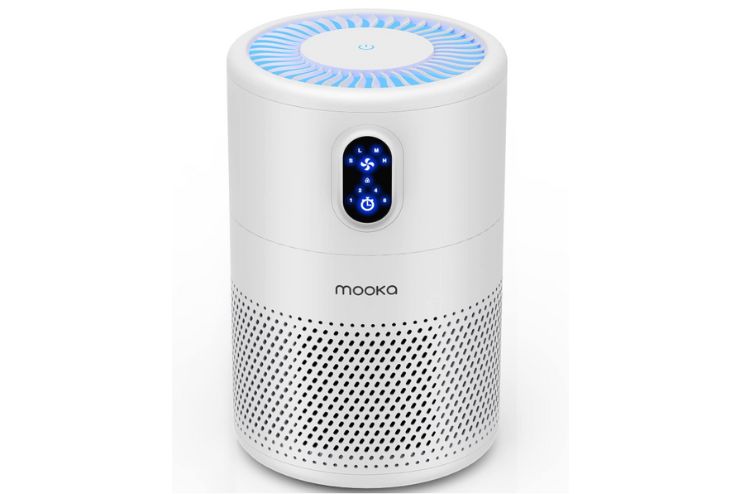
Action: To breathe cleaner air indoors and alleviate asthma attacks, purchase an air purifier equipped with a HEPA (High-Efficiency Particulate Air) filter. Install it in areas where you spend the majority of your time, such as the bedroom, living room, or workspace.
Why: HEPA asthma filters are extremely efficient at removing small airborne particles that can trigger asthma attacks. These include dust mites, pollen, mold spores, pet dander, and smoke.
By removing these irritants, HEPA air cleaners provide a cleaner, healthier space that facilitates easier breathing and fewer asthma attacks. They are particularly useful in pet-owning households or during allergy season when air quality is poorest.
Tip: To maintain your purifier in top condition, clean or replace the filters according to the manufacturer’s guidelines. Some purifiers have indicators or alarms that will tell you when it’s time to change. In addition, to achieve maximum efficiency, doors and windows must be kept closed during operation to restrict entry of new pollutants.
Bonus: Certain HEPA air purifiers are also equipped with activated carbon filters, which filter out odors and toxic gases such as volatile organic compounds (VOCs) that commonly occur in cleaning products, furniture, and paint. Utilizing a purifier that uses both HEPA and carbon filtration provides an additional shield for asthma and sensitive lung sufferers.
Asthma-friendly air tips like these don’t just minimize indoor allergens and pollutants but also make your home or office a safer, healthier place. Installing a HEPA air purifier as part of your asthma care plan is a sensible and effective step toward enhancing indoor air quality and overall well-being. Combined with other healthy air habits, it’s an important part of making your home or workspace an asthma-friendly place for you and those you love
2. Vacuum and Clean Regularly to Eliminate Dust, Dander, and Mold
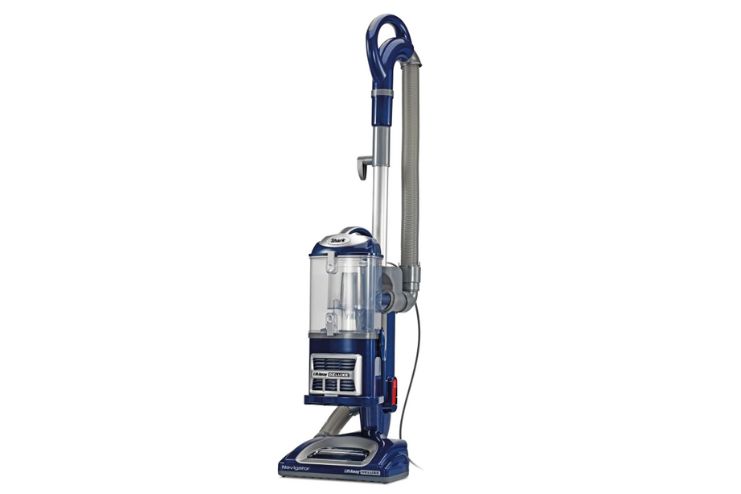
Action: To keep indoor air clean, vacuum your rugs, floors, and furniture once a week with a vacuum cleaner that has a HEPA filter. This is an important part of dust and asthma management, particularly in carpeted homes, homes with pets, or high-traffic areas.
Why: Regular vacuuming can reduce allergens such as dust mites, pet dander, and mold spores, all of which induce asthma symptoms. Vacuums with HEPA filters designed for asthma are particularly beneficial in that they capture fine particles rather than releasing them back into the atmosphere.
This is a valuable addition to air purifiers for asthma sufferers, providing a cleaner, healthier environment as a whole.
Tip: Pay attention to places where allergens are most likely to accumulate, including carpets, upholstery, and under furniture. Dust clean, soft surfaces like curtains and cushions, and vacuum mattresses to eliminate concealed allergens. Don’t forget to shift furniture every now and then to avoid dust accumulating in hard-to-reach places.
Bonus: When dusting surfaces, use a damp microfiber cloth rather than a dry one. These catch dust better and keep it from becoming airborne. Also, be sure to empty your vacuum cleaner’s dustbin or replace the bag before it becomes too full to maintain suction power and filtration efficiency.
These asthma-friendly air tips not only control visible dirt but are also important in dust and asthma control. Coupling frequent vacuuming with asthma air purifiers for those who suffer from asthma is an extremely effective routine that notably enhances indoor air quality and prevents asthma attacks in your household.
3. Wash Bedding Weekly to Combat Dust Mites
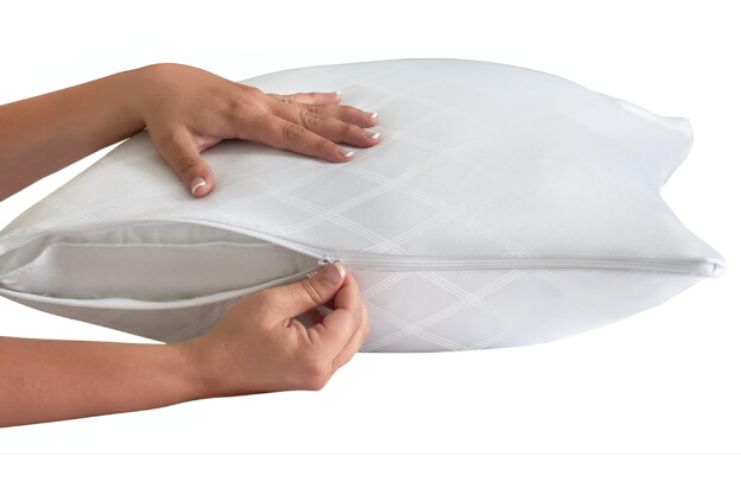
Action: To cut down on dust mites in the home, wash sheets, pillowcases, and blankets in hot water—at least 130°F (54°C)—weekly. Hot water kills dust mites and eliminates the allergens that they deposit behind.
Why: Dust mites are small insects that reside in soft things such as pillows, bedding, and mattresses. They survive on dead skin cells and reproduce best in warm, moist places. Invisible to the naked eye, their waste can cause asthma symptoms such as coughing, wheezing, and breathing difficulties, particularly at night.
Washing your bedding often is one of the easiest air quality solutions for asthma and can help maintain low levels of allergens in your sleeping area.
Tip: Utilize dust-mite-proof covers for pillows, mattresses, and box springs. These heavily woven covers establish a barrier that prevents dust mites from entering or leaving, limiting your exposure during sleep. If your bedding is old and hard to wash, replace it with machine-washable bedding.
Bonus: Do not use thick comforters or decorative pillows that are difficult to clean and tend to trap dust. Use lightweight, washable bedding and dry the indoor environment with a dehumidifier since dust mites find it difficult to live in low humidity.
By using allergen-proof bedding covers and washing sheets regularly, you can help eliminate one of the most prevalent indoor asthma causes. These are practical air quality solutions for asthma that can be incorporated into a larger strategy with HEPA filters for asthma, air purifiers for people with asthma, and regular home cleaning. They work together to ensure a healthy, asthma-safe home.
4. Control Humidity with Dehumidifiers and Exhaust Fans
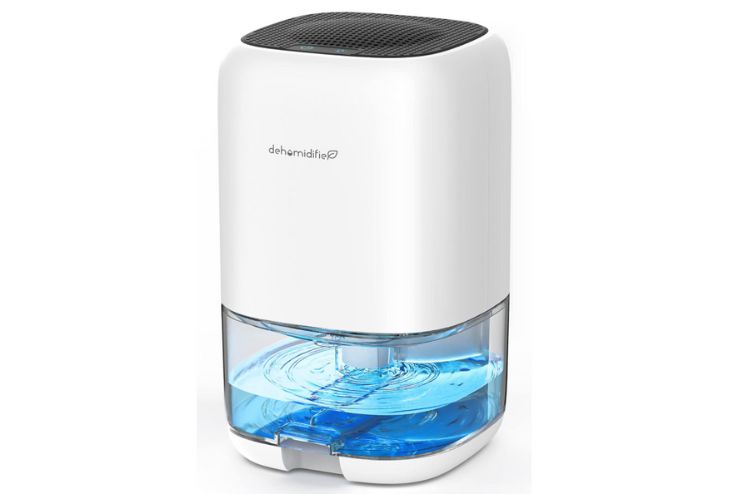
Action: Use a dehumidifier in areas of your home that tend to stay damp, such as bathrooms, basements, or kitchens. Aim to keep the indoor humidity level between 30% and 50%. This helps maintain comfortable air and reduces asthma triggers.
Why: Humidity creates the perfect environment for allergens like mold and dust mites to grow. These are common asthma triggers that can make breathing harder and cause flare-ups. Managing indoor moisture levels is key for effective humidity control and asthma relief. By keeping humidity in check, you reduce the chance of allergens thriving and improve overall air quality.
Tip: Install exhaust fans in rooms where moisture builds up quickly, especially in bathrooms and kitchens. These fans pull out humid air and prevent condensation from settling on walls, windows, and ceilings. Turning them on during and after showers or cooking can make a big difference.
Bonus: Modern dehumidifiers are energy-efficient and easy to maintain. Many come with settings that let you choose your desired humidity level, and some even shut off automatically when the tank is full. During monsoon seasons or in naturally humid climates, a dehumidifier is especially helpful in keeping the air dry and fresh.
Together, exhaust fans and dehumidifiers support dust and asthma management by reducing moisture that fuels allergens. Pairing this step with other solutions—like air purifiers for asthma sufferers and frequent cleaning—helps build a cleaner, healthier, and more asthma-friendly environment at home.
5. Replace Air Filters in Your HVAC System
Action: Replace the air filters in your heating and cooling (HVAC) system on a regular basis, every 3 months is best. If you have pets or allergies or reside in a dusty neighborhood, change them more frequently.
Why: Dirty or blocked filters can pump allergens back into your home’s air, making it more difficult for asthma patients to breathe. Clean filters will eliminate those particles and enhance overall indoor air quality for asthma. It’s one of the easiest but most useful clean air tips for asthma patients.
Tip: Utilize high-efficiency filters such as HEPA or MERV-13 rated filters. They are designed to catch minute particles like pollen, pet dander, mold spores, and dust. Cleaner air reduces asthma symptoms and improves breathing indoors.
Bonus: Have your professional HVAC serviced at least yearly. This ensures your equipment remains efficient and avoids the contamination of dangerous particles within your home’s air.
Frequent replacement of your HVAC filters helps promote long-term air quality. Combined with other measures such as the utilization of humidity management and the mitigation of dust, this new habit may enable you and your family to create a healthier home environment.
6. Declutter to Minimize Dust and Allergens
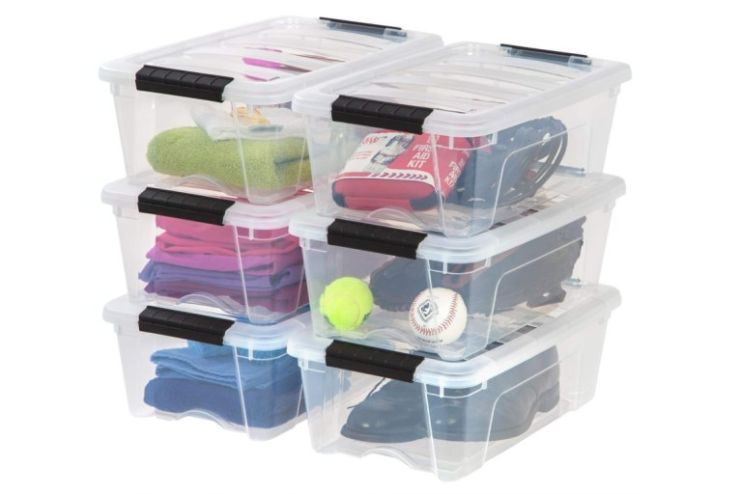
Action: Maintain your living areas free of clutter and clean. Having fewer items in your home keeps dust, pet dander, and other allergens low, which reduces the amount of such allergens that build up and create asthma symptoms.
Why: Cluttered rooms don’t only gather dust—they also complicate cleaning, giving allergens a chance to accumulate undetected. Bedrooms, especially, can be breeding grounds for dust mites and other allergens.
Too much clutter can also conceal sources of indoor air pollutants such as volatile organic compounds (VOCs), which are commonly present in cleaning supplies, paints, and plastics. Clutter reduction can reduce VOCs and asthma triggers in your home.
Tip: Select pieces of furniture constructed from dust-trapping materials such as leather or vinyl that can be wiped clean. Leave surfaces, particularly in bedrooms and living rooms, uncluttered with objects such as books, toys, and fabric accents that collect and retain allergens.
Bonus: Use storage bins or baskets with lids to keep products dust-free and organized. This makes your home simpler to clean while reducing allergen exposure.
Decluttering is a low-cost but highly effective means to complement air quality solutions for asthma. Combined with good ventilation, HEPA filters, and control of humidity, it aids in making your environment cleaner, more breathable, and asthma-friendly.
7. Ensure Proper Ventilation for Fresh Air Flow
Action: Invite fresh air inside your home by opening doors and windows when exterior conditions are comfortable, preferably at dawn or during a rain shower when pollen content and pollution level are low. Fresh air helps purge indoor pollutants and allergens accumulated over a period of time.
Why: Stale indoor air can capture allergens, moisture, and airborne chemicals like volatile organic compounds (VOCs). These are typical VOCs and asthma causatives in paint, furniture, and cleaning supplies. Proper airflow reduces these irritants and makes your home healthier and cleaner.
Tip: Install ventilation fans in major spaces such as the kitchen and bathroom. These remove cooking odors, humidity, and odors—silent contributors to indoor air pollution and mold. Adequate ventilation is necessary to enhance indoor air quality for asthma and develop an asthma-friendly environment.
Bonus: If you reside in a highly polluted area or are not able to open windows frequently, you may need to install a Heat Recovery Ventilator (HRV) or Energy Recovery Ventilator (ERV). These systems introduce fresh air while removing impurities and saving indoor temperature—perfect for asthma sufferers who require fresh, filtered air without compromising comfort.
Appropriate ventilation is one of the best remedies for asthma and for improving indoor air quality. It can complement air purifiers, dehumidifiers, and daily cleaning to enhance your indoor situation and avoid asthma attacks.
8. Add Houseplants to Improve Air Quality
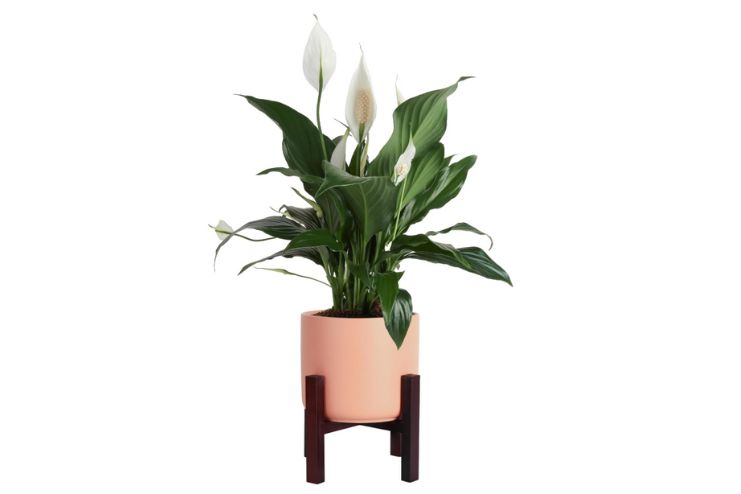
Action: Place air-purifying, non-spore-forming house plants such as peace lilies, snake plants, or succulents throughout your home. They are easy to maintain and naturally clean the air.
Why: Certain houseplants are able to eliminate toxic substances such as formaldehyde, benzene, and carbon monoxide from indoor air. They also release moisture into the air, which can minimize dryness and irritation of the nose and throat—two of the main asthma triggers. This makes them a subtle and organic means of enhancing indoor air for asthma and the overall asthma environment.
Bonus: Select plants that do not produce spores or have excess water, as they have the potential to promote mold growth—one of the more dangerous asthma initiators indoors. Water your plants sparingly and ensure pots have good drainage. Gently wipe leaves clean with a damp cloth to avoid dust buildup that will compromise indoor air quality for asthma patients.
Some of the best indoor plants for asthma patients are:
- Spider Plant(Chlorophytum comosum): Known for its ability to remove pollutants like formaldehyde and carbon monoxide from the air.
- Peace Lily(Spathiphyllum): Helps to filter out harmful toxins and adds moisture to the air.
- Snake Plant(Sansevieria trifasciata): Releases oxygen at night and removes toxins such as benzene and formaldehyde.
- Aloe Vera: Not only purifies the air, but also has medicinal properties.
- Areca Palm: Acts as a natural humidifier and removes airborne toxins.
9. Make Your Home or Workplace a Smoke-Free Zone
Action: Establish a definite rule that prohibits smoking within your home or workplace. Display clear “No Smoking” signs and discuss with family members, visitors, or employees why this rule is necessary for everyone’s well-being.
Why: Second-hand smoke has unhealthy chemicals that can bring on asthma symptoms, particularly in children and individuals with asthma. Exposure to this smoke—even brief—can cause coughing, wheezing, chest tightening, or even an asthma attack.
Making rooms smoke-free doesn’t only help individuals with asthma—it also benefits the air quality for all. Research indicates that smoke-free conditions substantially reduce exposure to toxic particles and cut down overall cigarette use.
Tip: If you are in charge of a workplace, establish a written no-smoking policy and enforce it strictly. If necessary, offer separate outdoor smoking sections at least several rooms away from doors, windows, and vents.
Bonus: Support individuals who smoke to access assistance if they wish to give up. Several free or cheap programs exist through which to support tobacco addiction.
Having a smoke-free place is one of the best methods to control indoor air pollution and aid asthma control. This tiny but strong action bears much fruit in helping to make the environment healthier for all.
10. Avoid Strong Fragrances and Scented Products
Action: Stay away from strong-smelling products like perfumes, air fresheners, incense, and scented candles. These items often contain chemicals that can irritate the lungs and trigger asthma symptoms.
Why: Many fragrances include volatile organic compounds (VOCs), which can worsen asthma by causing coughing, wheezing, or shortness of breath. Even natural fragrances can cause discomfort for people with asthma or fragrance sensitivity.
Strong scents linger in the air and stick to surfaces, making it hard to control their effects. Inhaling them, especially in enclosed or poorly ventilated spaces, can quickly lead to an asthma flare-up. People with asthma may also experience headaches or dizziness from exposure to such products.
Tip: Use fragrance-free or hypoallergenic products whenever possible, including laundry detergents, lotions, and cleaning supplies. If you like a pleasant scent in your home, try safer options like simmering herbs or using essential oils sparingly (and only if they don’t trigger your asthma). Try any new product initially by having a patch test.
Bonus: Keep windows open (when outdoor air quality is good) or use exhaust fans to remove lingering odors. Good airflow helps reduce the buildup of irritating scents and improves overall indoor air quality.
Avoiding strong fragrances is a simple yet effective step in creating a safer, asthma-friendly space at home or work. It helps reduce unnecessary irritants in the air, making breathing easier for everyone, especially asthma sufferers.
READ MORE: Breathing Exercises for Asthmatic Patients
Conclusion
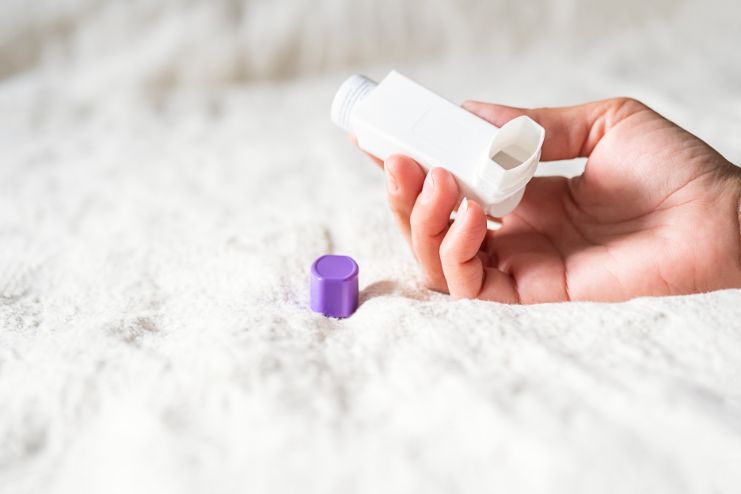
Making that first step towards cleaner indoor air can go a long way in controlling asthma. A clean, well-ventilated area with fewer allergens, such as dust mites, pet dander, mold, and VOCs, cuts down on asthma attacks.
Cleaning up the air doesn’t mean dramatic changes. Small steps such as using HEPA-filter air purifiers and fragrance-free cleaners can make a big difference. Small changes can improve your breathing conditions. These modifications not only assist with asthma control but also make an indoor environment that is more pleasant and healthier for all.
Begin small and attempt to put an air purifier in your bedroom, vacuum once a week with a HEPA filter vacuum, or wash your sheets in hot water. These simple routines can, over time, create a solid foundation for healthier breathing.
Do something today by changing one or two things, and grow from there. Each change you make, big or small, gets you one step closer to a healthier, safer environment for everyone with asthma. Share it with others, don’t just keep it to yourself; these tips may make a difference in someone’s healthier indoor air.
Ready to breathe easier? Take action today by picking one tip and putting it into practice—whether it’s decluttering your living space, swapping out your air filters, or adding an air-purifying plant to your home. Small steps can lead to big improvements.
Join the conversation by sharing your favorite asthma-friendly tips or home hacks in the comments below or with your online community—your advice might just help someone else take their first step toward cleaner, healthier air.
Download our Asthma-Friendly Environment Checklist (for a printable, quick-reference guide)
References
- https://aafa.org/allergies/prevent-allergies/control-indoor-allergens/
- https://www.cdc.gov/asthma/control/index.html
- https://www.nhlbi.nih.gov/health/asthma/causes
- https://www.health.ny.gov/publications/4955/
- https://www.epa.gov/asthma/asthma-triggers-gain-control
- https://www.umass.edu/ehs/
- https://www.eurekaforbes.com/blog/benefits-of-an-air-purifier.html
- https://www.electrolux.in/blog/how-to-use-vacuum-cleaner/
- https://www.health.com/condition/allergy/best-vacuums-for-allergies
- https://www.livemint.com/technology/gadgets/best-vacuum-cleaners-for-home-in-march-2025-keep-every-corner-spotless-and-sparkling-11742464371635.html
- https://www.mayoclinic.org/diseases-conditions/dust-mites/diagnosis-treatment/drc-20352178
- https://www.lung.org/clean-air/indoor-air/indoor-air-pollutants/dust-mites
- https://my.clevelandclinic.org/health/diseases/17712-dust-mite-allergy
- https://kridovia.com/blog/dehumidifier-benefits
- https://geepas.co.uk/blogs/magazine/the-benefits-of-using-a-dehumidifier-in-summer-vs-winter
- https://www.jandwheatingandair.com/5-benefits-of-changing-your-hvac-air-filters/
- https://www.bondcleaningincanberra.com.au/7-cleaning-tips-to-reduce-allergens-at-home/
- https://www.aentassociates.com/indoor-allergies-winter-months/
- https://www.wyndly.com/blogs/learn/allergies-only-in-bedroom
- https://green-living.na.panasonic.com/
- https://www.cdc.gov/coronavirus/2019-ncov/prevent-getting-sick/improving-ventilation-home.html
- https://www.frsevilla.com/ventilation-strategies-to-improve-air-circulation-in-the-office/
- https://www.co2meter.com/en-in/blogs/news/nasa-compiles-list-of-best-plants-to-clean-indoor-air
- https://www.wagnergreenhouses.com/blog/top-10-best-air-purifying-houseplants/
- https://theaffordableorganicstore.com/product-category/air-purifying-plants/
- https://www.cdc.gov/tobacco/secondhand-smoke/community.html
- https://community.aafa.org/db/ask-the-allergist/record/why-do-some-fragrances-and-perfumes-bother-my-asthma-ready
- https://drvirendrasingh.com/9-asthma-triggers-and-what-to-do-about-them/
In this Article















